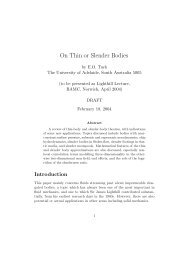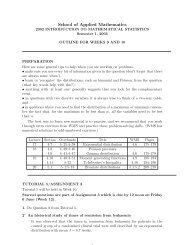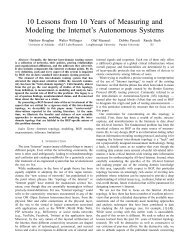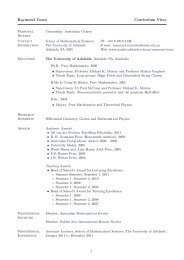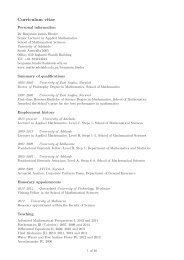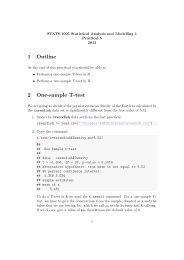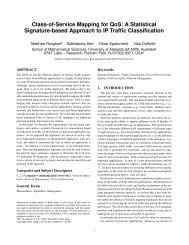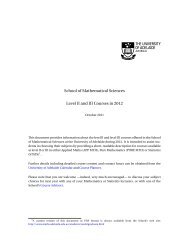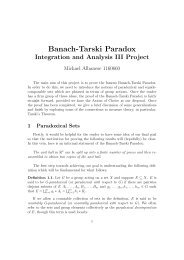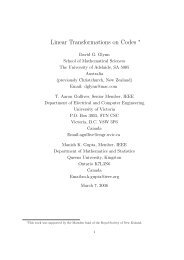PDF of Lecture Notes - School of Mathematical Sciences
PDF of Lecture Notes - School of Mathematical Sciences
PDF of Lecture Notes - School of Mathematical Sciences
Create successful ePaper yourself
Turn your PDF publications into a flip-book with our unique Google optimized e-Paper software.
1. DISTRIBUTION THEORY<br />
Remark<br />
The same methods can be used to establish a similar result for block diagonal matrices.<br />
The simplest case is the following, which is most easily proved using moment generating<br />
functions:<br />
X 1 , X 2 are independent<br />
if and only if Σ 12 = 0, i.e.,<br />
( ) (( ) ( ))<br />
X1<br />
µ1 Σ11 0<br />
∼ N<br />
X<br />
r1 +r 2<br />
,<br />
.<br />
2 µ 2 0 Σ 22<br />
Theorem. 1.10.7<br />
Suppose X 1 , X 2 , . . . , X n are i.i.d. N(µ, σ 2 ) RVs and let<br />
¯X = 1 n<br />
S 2 =<br />
n∑<br />
X i ,<br />
i=1<br />
1<br />
n − 1<br />
n∑<br />
(X i − ¯X) 2 .<br />
i=1<br />
Then ¯X ∼ N(µ, σ 2 /n) and<br />
(n − 1)S2<br />
σ 2<br />
∼ χ 2 n−1 independently.<br />
(Note: S 2 here is a random variable, and is not to be confused with the sample covariance<br />
matrix, which is also <strong>of</strong>ten denoted by S. Hopefully, the meaning <strong>of</strong> the notation<br />
will be clear in the context in which it is used.)<br />
Pro<strong>of</strong>. Observe first that if X = (X 1 , . . . , X n ) T then the i.i.d. assumption may be<br />
written as:<br />
X ∼ N n (µ1 n , σ 2 I n×n )<br />
1. ¯X ∼ N(µ, σ 2 /n):<br />
Observe that ¯X = BX, where<br />
[ 1<br />
B =<br />
n<br />
]<br />
1<br />
n . . . 1<br />
n<br />
Hence, by Theorem 1.10.5,<br />
¯X ∼ N(Bµ1, σ 2 BB T ) ≡ N(µ, σ 2 /n),<br />
as required.<br />
67





